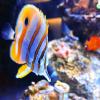-
Topics
-
Latest Update
-
-
0
Selling Nano Tank With FIlter and Chiller and Maxspect Jump L-130
Selling the above. All Items Used for 3 months only. 1.Tank and HOB FIlter. (Tank size: L38cm x W30cm x H 28cm). Selling for $50 2.Maxspect Jump L130. Selling for $60 3. Chiller good for 60l. Selling for $80 Take all for $160. FCFS Collection only, Bukit Batok. PM me to deal. -
2
Fluval Sea Marine & Reef LED 2.0
Upz Sent from my SM-N980F using Tapatalk -
226
WTS live rotifers, tigger pods, phyto
ups tele me at littlefishaqua location at tamp/hougang $50 worth of purchase foc delivery -
0
Corals to sell/give
Free - Have several GSP on tank wall. Can scrape and give to whoever wants Free several broken pieces of monti Also large size green monti for sale for $20 Zoa colony on rock $20 zoas with GSP (slightly bigger) $10 zoas only Medium size toadstool -$15 Collection 523608 Sent from my FCP-N49 using Tapatalk
-







Recommended Posts
Join the conversation
You can post now and register later. If you have an account, sign in now to post with your account.